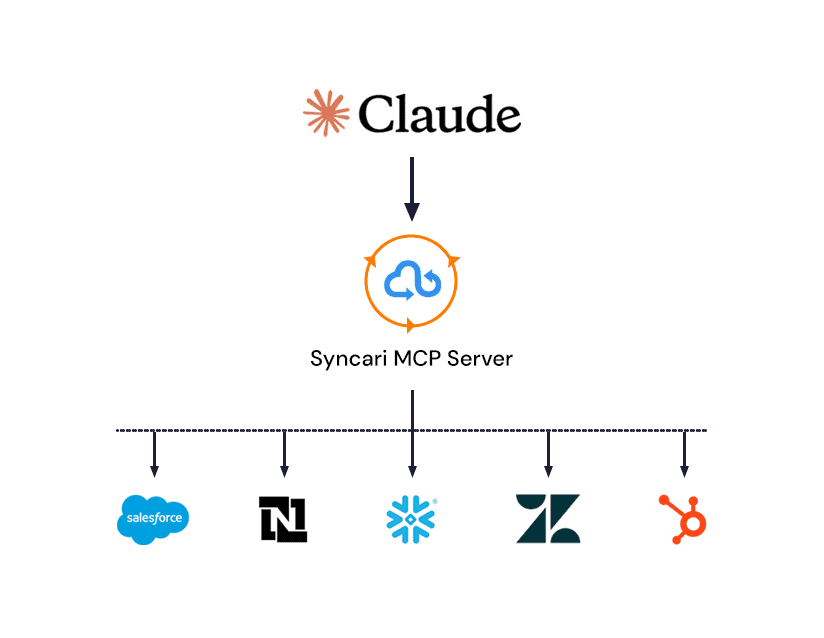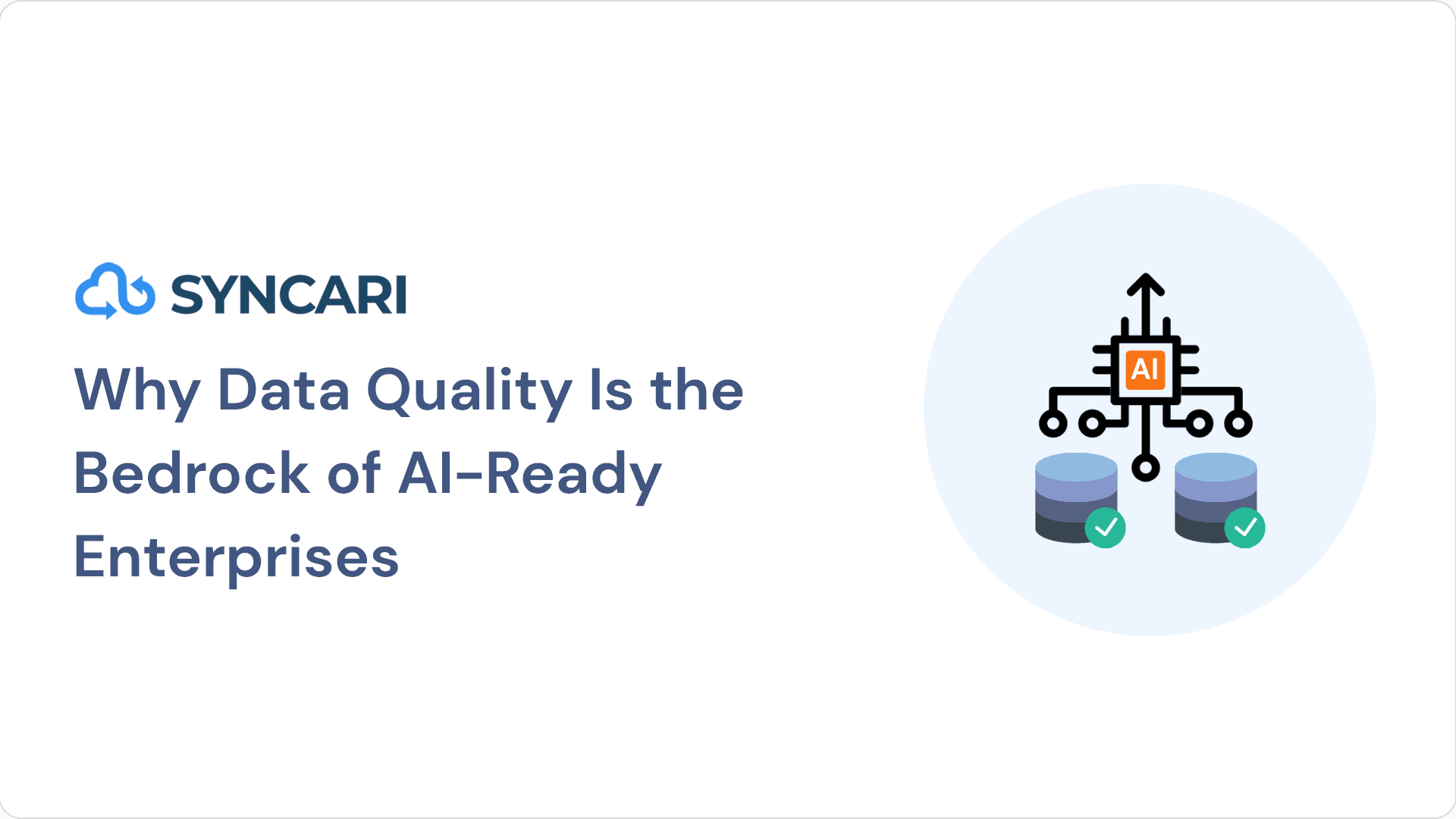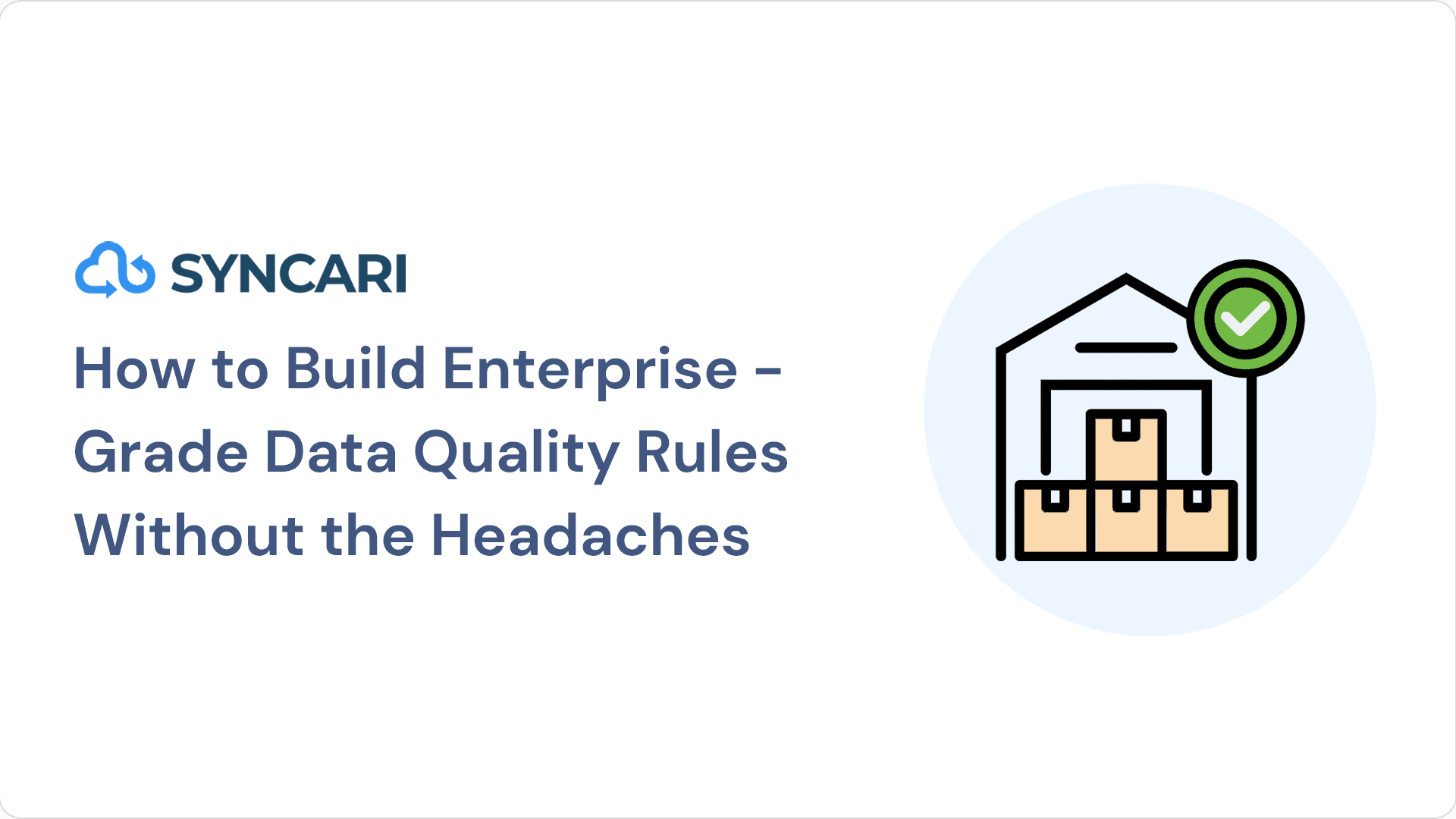The role of data architecture has fundamentally changed. In an era defined by AI agents, intelligent workflows, and dynamic ecosystems, legacy MDM stacks can no longer keep up.
Today’s enterprise needs trusted, governed, and synchronized data that fuels both analytical insight and operational execution. That’s why composable MDM is emerging as the architectural cornerstone of next-generation data strategies.
In this post, we’ll unpack how enterprise data and IT leaders can build a real-time, composable MDM architecture using Syncari—an agentic, integration-native platform designed for today’s data complexity and tomorrow’s automation needs.
Why Composable MDM Is Essential for Modern Data Architectures
Legacy MDM systems operate like command centers—centralized, rigid, and slow. While they were designed to reconcile fragmented data and support BI use cases, they weren’t built for the cloud-native, event-driven, multi-system world we now operate in.
Key Limitations of Traditional MDM:
- Rigid hub-spoke models that delay time-to-value
- Siloed governance disconnected from integration and automation
- High implementation and maintenance overhead
- Little support for real-time operational workflows
- Inability to serve AI/ML systems with context-rich, current data
According to Gartner, by 2026, 66% of candidate master data will be identified by data fabric or mesh architectures—not traditional MDM hubs. That signals a tectonic shift: MDM must now integrate with and power distributed, composable data environments.
What Is Composable MDM?
Composable MDM is not a product category, it’s an architectural approach. It treats master data not as a siloed domain but as a governed service layer, available across the enterprise wherever it’s needed—securely, contextually, and in real time.
A composable MDM stack:
- Embeds governance into data movement (not just into BI layers)
- Provides modular, domain-driven capabilities that evolve with business needs
- Unifies integration, quality, and synchronization logic
- Operates in real-time and supports operational systems, not just analytical ones
- Enables AI agents to access and act on live master data
This architecture aligns with data mesh principles while retaining the rigor of master data governance—without the overhead.
Core Design Principles for Composable MDM
When evaluating how to architect a composable MDM stack, consider the following foundational principles:
1. Domain-Centric Modeling
Instead of a monolithic model, adopt decoupled, domain-specific master data models (customer, product, partner, etc.) that map to real business entities. These should be versioned, governed, and context-aware.
2. Real-Time Sync and Bi-Directional Flow
To enable operational use cases (e.g., customer onboarding, order-to-cash, partner provisioning), the MDM layer must synchronize across applications in real time without race conditions or inconsistency.
3. Embedded Data Quality & Enrichment
Validation, deduplication, enrichment, and golden record creation shouldn’t be post-processing steps—they must happen in-stream, automatically, with the ability to review and approve exceptions.
4. Seamless Integration + Governance
Integration shouldn’t happen separately from governance. Both should be designed together as part of the same data flow—observable, retryable, traceable, and explainable.
5. AI-Ready Data Services
AI agents—whether powering chat, decision intelligence, or automation—require structured, timely, and trustworthy data. Composable MDM must expose data with the semantics, context, and lineage AI systems require.
Syncari’s Approach: Composable MDM by Design
Syncari was built from the ground up to deliver agentic, composable MDM that integrates integration, governance, and action into a single, extensible architecture.
Here’s how Syncari implements these principles:
Unified Data Model with Modularity
Syncari supports a centralized-yet-composable data model—where core domains (e.g., account, opportunity, product) are defined once, enriched across systems, and kept in sync with full history and version control.
Each domain is independently deployable, making it easy to scale incrementally.
Real-Time, Bi-Directional Synchronization
Unlike traditional MDM tools that batch-load to and from systems, Syncari offers event-driven, bi-directional pipelines that respond to changes in real time. This means:
- Updates in Salesforce reflect instantly in Netsuite
- New customers in Zendesk sync back to your CDP
- Product changes in your PLM cascade to your e-commerce stack
And it’s all managed with retry logic, observability, and governed automation.
Agentic Automation via MCP Server
With Syncari’s new MCP Server, AI agents (e.g., Claude) can query unified master data, generate insights, and trigger actions directly in the systems of record. This turns your MDM layer into a live, intelligent orchestration surface with full governance.
For example:
“Show me customers with overdue invoices and low CSAT” → Claude queries unified data → Sends alerts to CSMs → Triggers workflows in HubSpot and Netsuite.
That’s agentic MDM in action.
Integrated Governance and Observability
Every Syncari pipeline is schema-aware, auditable, and rule-driven. You can track lineage, set up approval workflows, and enforce policies—all while the data is moving. This eliminates the need for separate quality tools or governance overlays.
Example Architecture: Syncari in a Composable Data Stack

In this architecture:
- Claude interacts with MCP Server to access unified data
- Syncari synchronizes and governs data flows across all systems
- Real-time insights feed AI, human workflows, and analytics simultaneously
No brittle middleware. No batch delays. No governance gaps.
Real-World Outcomes from Syncari Customers
- Reduced service costs by 10.6% YoY through improved operational consistency
- 5.3x better up-sell performance with unified customer views
- Accelerated GenAI use cases by providing real-time, governed data context to AI agents
- Simplified tech stacks by replacing brittle point-to-point integration with composable orchestration
Conclusion: Composable MDM is the New Default
If you’re still architecting your data stack around batch ETL, bolt-on MDM hubs, or disconnected governance layers—you’re building for the past.
To support real-time decisions, autonomous agents, and cross-functional alignment, you need an MDM architecture that is composable, intelligent, and action-oriented.
Syncari gives you that architecture, today.
📥 Ready to see what composable MDM looks like in your environment?
Request a demo to evaluate your next move.



